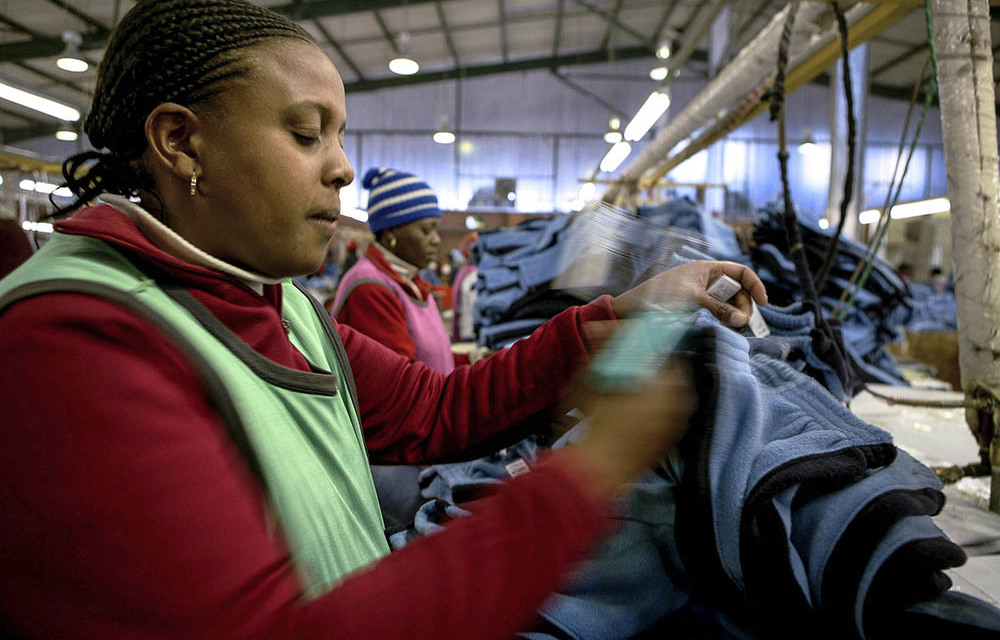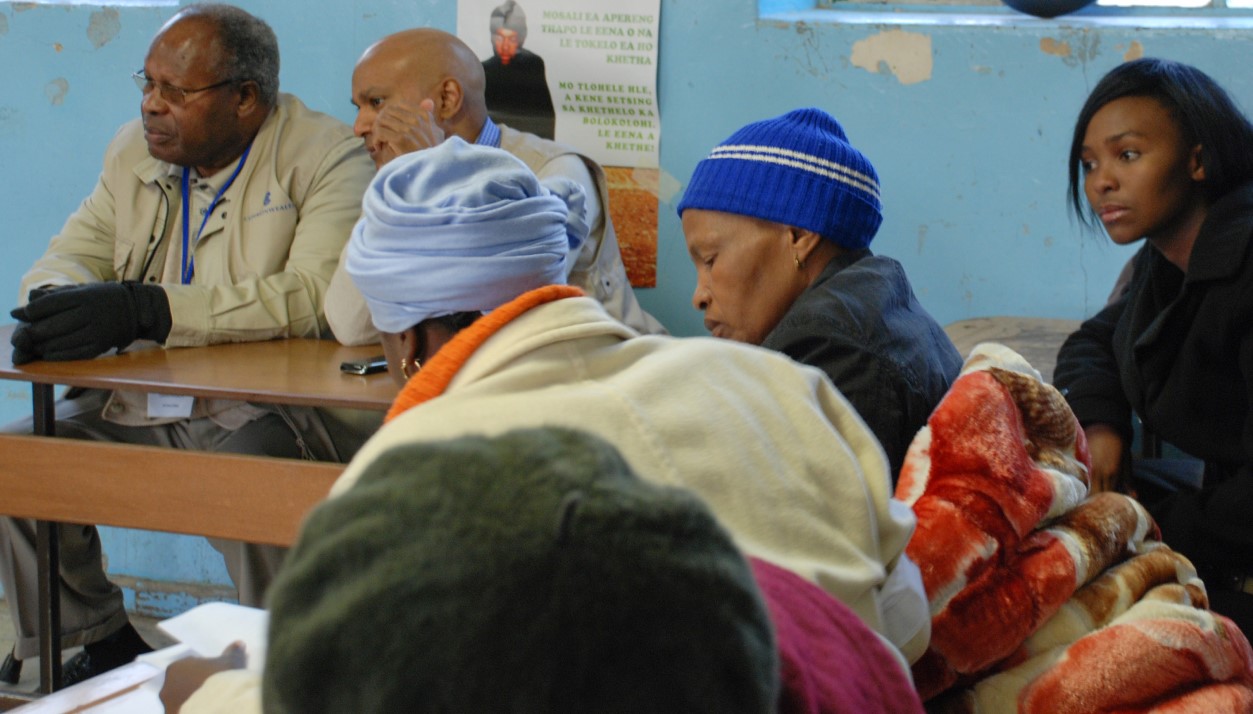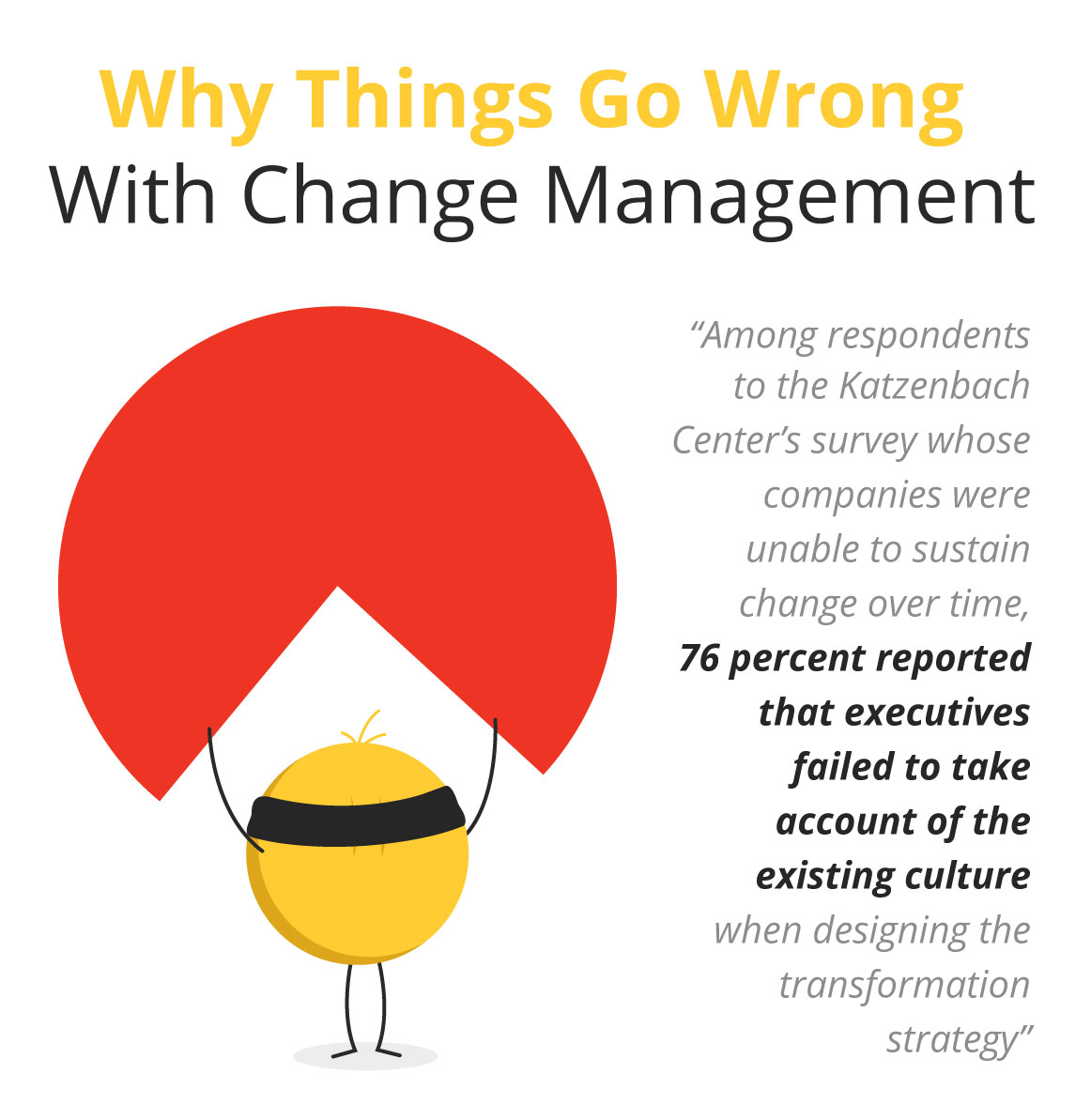A Comprehensive Analysis of Lesotho's Textiles and Garment Sector
Focus on the sector’s ability to create jobs, weak capacity to leverage on AGOA and the recent competition and fluctuations in global demand

Dr Tlohelang Aumane
Policy Consultant, Member of Parliament for the 10th Parliament of Lesotho, Former Minister of Development Planning

State of Lesotho's Textiles and Garment Sector
Over the course of the last ten years, the textiles and garment sector in Lesotho has experienced notable shifts in its trajectory. Initially, it exhibited promising growth, driven by favorable trade agreements and a skilled workforce. However, recent years have witnessed increased competition and fluctuations in global demand, leading to a more nuanced assessment of the sector's standing. Factors such as evolving wage increases, buyer preferences and covid-19 have significantly influenced its current state. This sector's reliance on external markets, particularly in the United States, plays a pivotal role in its performance. The sector's dependency on these markets underscores the importance of strategic positioning and adaptability to global market dynamics.
Contribution to Lesotho's GDP
Traditionally, the textiles and garment sector has been a linchpin of Lesotho's GDP. It has been a significant source of employment and export revenue. However, its relative contribution has faced challenges in recent years. While it remains a vital economic engine, the sector has encountered hurdles in maintaining its historical GDP share.
Factors contributing to this decline include heightened competition, shifts in buyer preferences, and evolving global trade dynamics. Additionally, the sector's vulnerability to external shocks, dependence on competitive labor remuneration and fluctuations in demand further impact its standing in the country's GDP. Furthermore, other sectors such as mining also came in and became one of the top contributors to the GDP.
Despite these challenges, the sector's importance cannot be understated. It continues to play a crucial role in providing livelihoods for a substantial portion of the population, particularly in urban centers and surrounding regions. Furthermore, the sector has been a key driver of Lesotho's export performance, contributing to the country's foreign exchange earnings. The main destinations for the garment sector are South Africa and the United States of America.
Efforts to bolster the sector's contribution to the GDP must involve a multi- faceted approach. This includes targeted policies to enhance competitiveness,
foster innovation, and expand market access. Additionally, investments in skills development and technological advancements can bolster the sector’s resilience and long-term viability. Supporting the small and medium-sized enterprises (MSMEs) to also be export-ready and to get orders from abroad, could also be important.
Capacity of Local Garment Entrepreneurs
The ability of local garment entrepreneurs to operate at a large scale within Lesotho's textiles and garment sector is pivotal for sustainable growth and local ownership. While Lesotho boasts a pool of skilled artisans and workers, there are notable challenges faced by local entrepreneurs seeking to expand their operations.
Access to capital and financing options remains a significant hurdle, particularly for MSMEs. Limited availability of affordable credit and investment capital constrains the ability of local entrepreneurs to undertake large-scale ventures. Technical expertise and managerial skills are also paramount in the textiles and garment sector. Investments in training and skills development programmes are essential to empower local entrepreneurs and equip them with the knowledge and capabilities required to compete in the global market. Supportive policies and initiatives aimed at nurturing entrepreneurship within the sector are crucial. This includes incentives for local garment entrepreneurs, such as tax breaks, streamlined licensing processes, and targeted mentorship programmes. This could include supporting innovation and provide incentives for quality.
Furthermore, fostering partnerships between local entrepreneurs and established players in the sector can facilitate knowledge transfer and provide access to networks and markets. Collaborative efforts between government agencies, industry associations, and financial institutions can also play a pivotal role in building the capacity of local garment entrepreneurs.
AGOA and its impact on Lesotho's textiles sector
The African Growth and Opportunity Act (AGOA) has been instrumental in shaping Lesotho's textiles and garment sector. AGOA was signed into law in 2000 as a preferential access programme that provides duty-free and quota-free access to a number of products from eligible African countries, including Lesotho. It exceeded initial expectations by creating jobs and promoting Foreign Direct Investment (FDI), hence, contributing significantly to the economic development of Lesotho. However, it is important to note that AGOA's impact is primarily focused on specific 5000 tariff lines.
This targeted approach has been effective in bolstering Lesotho's textile exports to the United States. While these span across many sectors, it is important to note that Lesotho’s success has been in the textiles and clothing sector. There was a surge of the first time investments in the country, notable being the denim fabric mill and the apparel sector. The alignment between AGOA and Lesotho's textiles sector is rooted in the country's competitive advantage in producing specific products that meet the criteria outlined by the Act. Previously, there was a third country fabric sourcing, which helped countries to meet the rules of origin criteria. This synergy has established Lesotho as being synonymous with textiles under AGOA.
However, the limitation to a few tariff lines does present challenges for diversification within the sector. A number of challenges inhibit the capacity of Lesotho to produce and export more advanced or processed agricultural products that would attract good prices. To address this shortfall, strategic efforts should be undertaken to explore avenues for expanding product lines that align with AGOA's criteria. Moreover, it is imperative for Lesotho to leverage AGOA as a springboard for broader economic diversification. While the textiles sector has been a cornerstone of AGOA-driven exports, other industries, such as agriculture and digital trade, hold untapped potential for growth and development. Agriculture is central to fostering economic growth, reducing poverty, and improving food security, as it employs a large number of people in the country and many people still survive on subsistence agriculture.
The US trade data to mid-year 2023 released by the US International Trade Commission, shows that exports to the US from AGOA beneficiaries grew by 12% between 2021 and 2022. Lesotho’s exports to mid-year 2023, has worsened compared to exports mid-year 2022. This has not gone unnoticed as a great deal of job losses to-date, due to factory closures, has been experienced. This is likely to have a negative impact on the progress made on poverty reduction and income inequality in the country. This is likely going to worsen if no counter measures are implemented by the Government of Lesotho to save jobs in the sector.
Opinion Vote Polls
Do you think the existing government is going in the right direction to benefit the people of the country?
Subscribe for your daily newsletters
Enter your email to subscribe to our newsletter.



